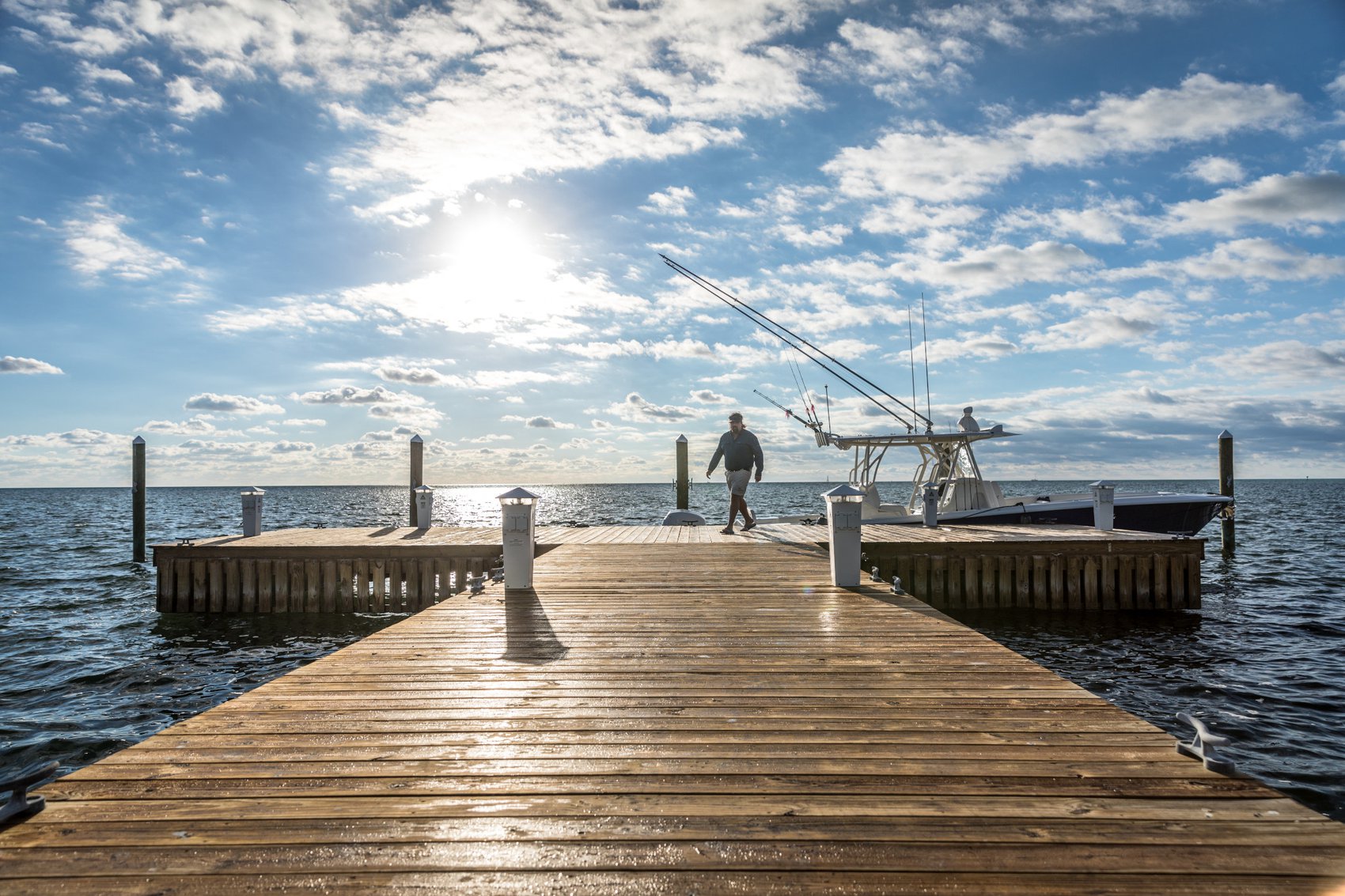
Tips to Dock a Boat the Easy Way
Many people get stressed out when docking a boat, but the tips in this story will help make it easy to dock your boat whether you’re alone at the helm or you have a crew to help out.

When it comes to docking a boat it’s natural for boaters, especially new boaters, to feel a bit of trepidation. After all, you’re about to pull your pride and joy up next to a solid object that could cause scrapes, dings, or dents or, maybe worse, another boat. Plus, there may be other boaters watching. The good news? After you dock a boat a few times it will become second nature. Just as parking a car was probably a bit stressful once upon a time yet feels automatic today, you’ll become a pro at docking your boat in a flash. If, that is, you follow this basic boat docking procedure and learn these tips for how to dock a boat the easy way.
- Get your lines and fenders ready ahead of time, before you approach the dock. Lines should be secured to the boat’s cleats and neatly coiled so they’re ready for fast use, and fenders should hang over the side of the boat fore and aft (and amidships, on large vessels) to prevent your boat from rubbing up against the dock.
- Observe your surroundings for any natural forces that you may need to take into consideration, like a strong breeze or moving currents.
 When you’re fully prepped, begin to slowly approach the dock. If possible, approach from downwind (so the force of the wind pushes you away from the dock, not toward it, to lessen the chance of approaching too quickly).
When you’re fully prepped, begin to slowly approach the dock. If possible, approach from downwind (so the force of the wind pushes you away from the dock, not toward it, to lessen the chance of approaching too quickly).- If you have a helper aboard, position them fore or aft depending on which section of the boat is harder for you to get to. If it’s harder for you to move from the helm to the bow cleat as opposed to the stern cleat, for example, position him or her in the bow.
- Move your boat slowly toward the dock. The key work here is “slowly.” Just as you wouldn’t whip your car into a tight parking spot, take your time and apply a sensible dose of caution.
- Continue monitoring your surroundings as you get close to the dock and be prepared to counter-steer against wind and/or current as necessary.
- When you have the boat next to the dock, bring it to a stop by grabbing the pier or using a gentle application of reverse thrust from the outboard, if necessary. If you have a helper aboard, they can assist in fending the boat off the dock and/or holding the boat in place.
- Secure the lines to the dock cleats with a cleat hitch. (Make a figure-eight around the horns and over the top of the clean, then roll the line over to create an underhand loop in it, slide the loop over the cleat horn, and pull it tight).
If this seems rather simple, well, that’s because it really is a piece of cake to dock a boat — just as long as you know these basics and take your time. Of course, there are a few variables that can come into play and some finer points to consider. So also keep these boat docking tips in mind:
- Whenever wind or currents are involved, remember that you have more control over the boat when heading into them as opposed to going with them (so you don’t get shoved around from behind).
- In a strong crosswind or crosscurrent, you may need to intentionally steer slightly off-course as you approach the dock to account for any sideslip that might occur.
 When you’re in close quarters, turn the wheel while the engine is in neutral. Then bump it into and out of gear to make minor adjustments. You’ll find that doing so allows for much finer maneuvers than if you try to turn the wheel one way or the other when power is already being applied.
When you’re in close quarters, turn the wheel while the engine is in neutral. Then bump it into and out of gear to make minor adjustments. You’ll find that doing so allows for much finer maneuvers than if you try to turn the wheel one way or the other when power is already being applied.- Remember that even when out of gear, the outdrive will still act as a rudder. So, if the wheel isn’t centered, your boat will still turn slightly as it drifts.
- If you have a boat with twin engines, consider centering the steering wheel and opposing the engines to maneuver the boat. All boats are different and we can’t say how yours will react to this method (the only way to find out is to try), but in some cases it’s easier to control the boat with the engines as opposed to the steering wheel.
- If you have others aboard, be sure to remind the crew to keep their hands and legs inside the boat. Even when fending, no one should ever allow any part of their body to get between the boat and the dock itself, where there’s a risk of being pinched or worse.
Okay: are you ready to get out there and start docking? Just follow this basic process and keep these docking tips in mind, and you’ll dock that boat like a pro in no time.
Article: Lenny Rudow, Rudow's FishTalk
Photos: Carter Andrews















